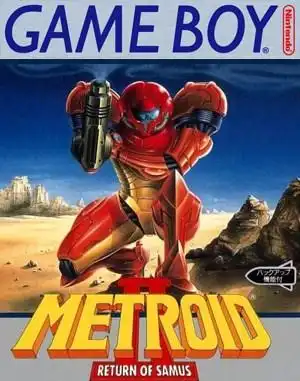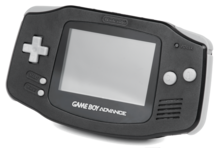Stepping back into the shoes of Samus Aran has always been an adventure, but doing it on the original Game Boy felt different. Before Super Metroid redefined the genre on the SNES, there was a crucial, often overlooked chapter in Samus's saga: Metroid II: Return of Samus. Released in 1991, this monochrome masterpiece sent players on a singular, grim mission to the Metroid homeworld, SR388, to eradicate the entire species.
It might not have had the vibrant colors or sprawling, interconnected map of its console predecessors, but Metroid II carved out its own identity with a unique atmosphere and a narrative focus that would fundamentally change the series forever. Let's power up our old Game Boys (or fire up an emulator!) and revisit this pivotal entry.
The Grim Mission on SR388
Following the events of the original Metroid, the Galactic Federation, spooked by the power of the Metroids, declares them too dangerous to exist. Their solution? Send Samus Aran, the only person who survived Zebes, to their home planet, SR388, and wipe them out. Talk about a heavy assignment!
This premise immediately sets a darker, more focused tone than the first game's exploration of a pirate base. You aren't just exploring; you are hunting. The planet SR388 feels ancient, alien, and hostile, a stark contrast to the familiar caverns of Zebes.
Navigating the Depths
Metroid II's gameplay loop is distinct. Instead of a vast, open map that encourages getting lost (in a good way!), SR388 is structured more linearly, guiding you down through distinct areas. Progress is gated not just by power-ups, but by the number of Metroids you've eliminated in a specific zone. Defeat enough, and an earthquake occurs, lowering the lava level and opening the path deeper into the planet.
This mechanic, while sometimes leading to backtracking just to find that last elusive Metroid, creates a palpable sense of progression tied directly to your objective. The constant ticking counter of Metroids remaining reinforces the relentless nature of your mission. New abilities like the Spider Ball and Spring Ball were introduced here, becoming staples of the series.
Facing the Metroids
The core enemies in Metroid II aren't Space Pirates; they are the Metroids themselves, encountered in various stages of their lifecycle. You start fighting the familiar Alpha Metroids, but as you descend, you face Gamma, Zeta, and Omega Metroids, each larger, tougher, and requiring different tactics.
This depiction of the Metroid lifecycle was groundbreaking and added a biological horror element. These aren't just floating jellyfish; they evolve, adapt, and become formidable bosses. While some players found the boss fights, particularly the Omegas, a bit repetitive or awkward on the Game Boy's limited controls, the concept of hunting evolving creatures was incredibly strong.
The Hatchling: A Shift in Tone
The game's most iconic and impactful moment arrives near the end. After seemingly eradicating the last Metroid, you encounter a single Metroid egg that hatches, and the infant Metroid imprints on Samus, mistaking her for its mother.
This twist completely changes the narrative. The relentless, almost genocidal mission transforms into one of protection. The game's music shifts from the driving "Surface of SR388" theme to a peaceful, hopeful melody. The final ascent from the planet with the tiny hatchling following Samus is an incredibly poignant ending, especially given the bleakness that preceded it. This moment directly sets up the story of Super Metroid.
Legacy and Remakes
Despite the Game Boy's technical limitations, Metroid II is a crucial piece of the Metroid puzzle. It advanced the timeline significantly, introduced key abilities, and delivered a memorable, albeit linear, adventure.
Its unique structure and narrative impact made it a prime candidate for remakes:
- AM2R (Another Metroid 2 Remake): A fan-made project that faithfully recreated the game with modern graphics and gameplay, widely praised before receiving a cease and desist.
- Metroid: Samus Returns: An official 3DS remake by Mercury Steam (who later developed Metroid Dread). This version significantly reworks the level design and adds new mechanics like the Melee Counter and Aeion abilities, offering a fresh take on the SR388 mission.
Both remakes highlight how strong the core concepts of Metroid II were, even if the original hardware couldn't fully realize them.
Is It Still Worth Playing Today?
Playing the original Metroid II: Return of Samus today requires appreciating it as a product of its time. The graphics are simple, the screen crunch can make platforming tricky, and the backtracking can be tedious. However, its historical significance, unique atmosphere, and the power of its story beats — particularly the Metroid lifecycle and the Hatchling moment — make it a fascinating play for dedicated fans.
If you prioritize modern gameplay, Samus Returns is an excellent, vibrant reimagining. But for a taste of pure, focused retro atmosphere and a crucial piece of gaming history, the original Game Boy adventure is still worth experiencing.
Frequently Asked Questions
What console was Metroid II: Return of Samus released on?
It was released on the original Nintendo Game Boy.
Where does Metroid II fit in the Metroid story?
It is the direct sequel to the first Metroid and precedes Super Metroid. Samus's mission on SR388 and the events with the Metroid Hatchling directly lead into the SNES classic.
Are there remakes of Metroid II?
Yes, there are two notable remakes: the fan-made AM2R (Another Metroid 2 Remake) and the official Nintendo 3DS title Metroid: Samus Returns.
What is unique about Metroid II's gameplay?
Unlike other 2D Metroidvania games, progress in Metroid II is often tied to defeating a set number of Metroids in an area, which triggers earthquakes that open new paths. It also features a more linear, descending level structure compared to the open-ended maps of Metroid and Super Metroid.


